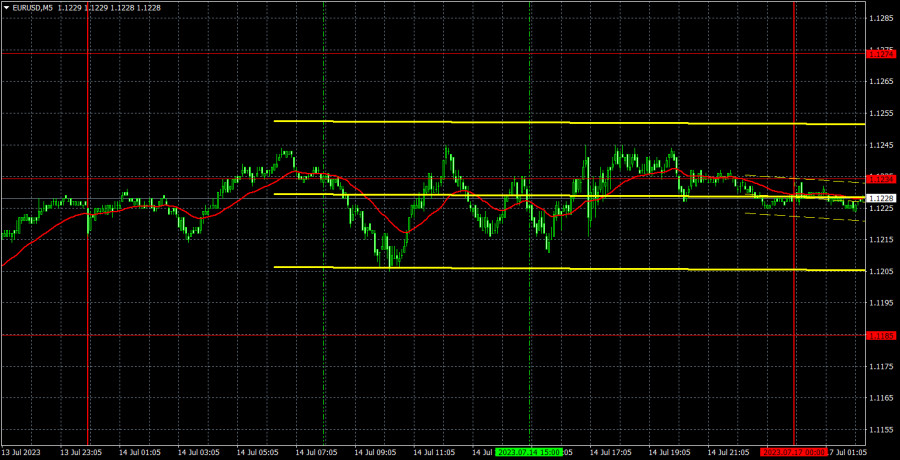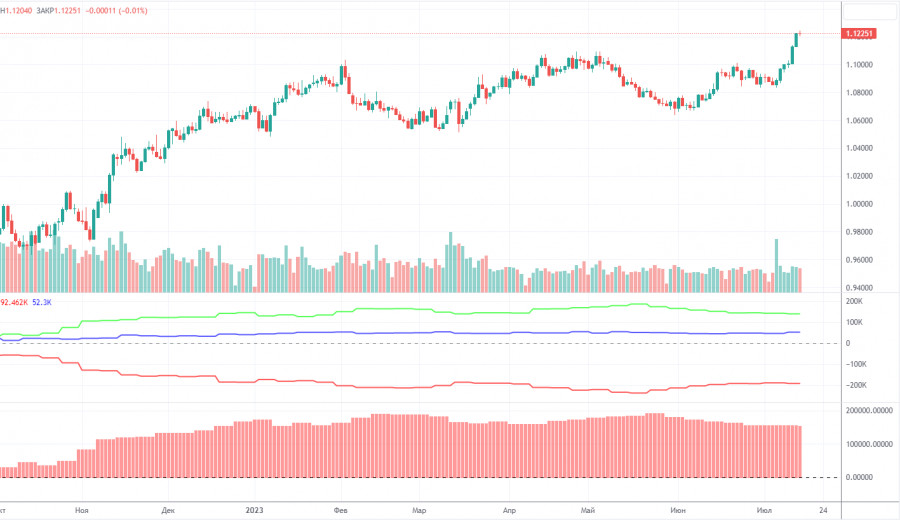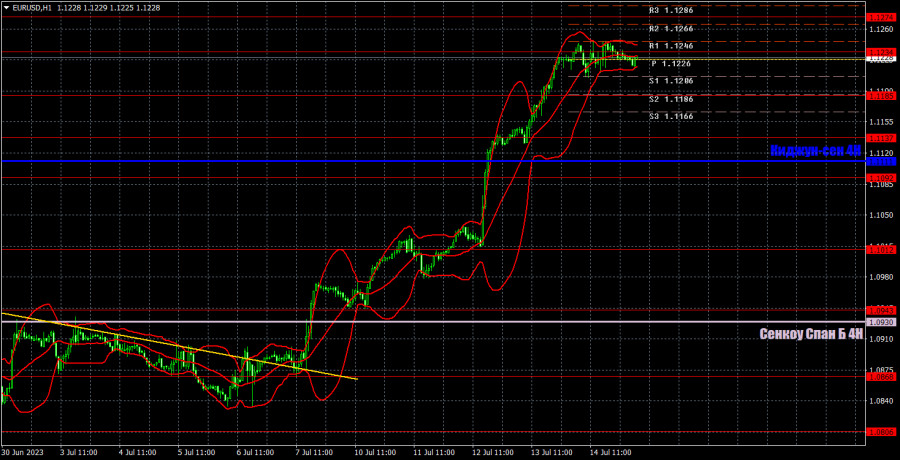

The EUR/USD was flat last Friday. It did not try to resume growth or start a correction as if traders had just left for the weekend one day earlier. The volatility totaled 40. The pair was largely moving sideways. Recently, we have talked about the illogical movements of both currencies. After four days of strong growth, the price failed to even slightly decline when the economic calendar was empty. For the whole day, only one report was published – the University of Michigan Consumer Sentiment Index. At the end of June, this indicator turned out to be stronger than expected. However, the US dollar managed to rise by only 25 pips which had no impact on the pair's movements.
Thus, the uptrend continues. The euro could grow even higher this week. There is no point in analyzing Friday's trading signals as the pair had been moving sideways all day. It generated a lot of signals near the 1.1234 level but they all turned out to be false. Traders could have tried to make a profit out of the first two signals. After a sell signal, a Stop Loss was activated at breakeven as the price dropped by 15 pips. The pair did not move following the second signal. All other signals should have been ignored as the first two turned out to be false.
COT report:
On Friday, a new COT report for July 11 was released. In the last 10 months, COT reports fully corresponded to what is happening in the market. The chart above clearly shows that the net position of major traders (the second indicator) began to grow in September 2022 and at about the same time the euro started climbing too. In the last 5 months, the net position has not risen but the euro remains at very high levels. At the moment, the net position of non-profit traders is bullish. The euro keeps climbing against the US dollar.
I have already mentioned the fact that a fairly high value of the net position signals the end of an uptrend. This is also confirmed by the first indicator where the red and green lines are very far from each other. Usually, it precedes the end of the trend. During the last reporting week, the number of long positions of the non-commercial group of traders increased by 3,000 and the number of short ones- by 5,700. The net position declined by 2,700 positions. The net position is falling, while the euro is growing. This is illogical. The number of long positions is higher than the number of short ones of non-commercial traders by 140,000. This is a very large gap as the difference is almost threefold. Even without COT reports, it is obvious that the euro should decline but speculators are still in no hurry to sell it.
Analysis of EUR/USD 1H.
On July 17, one should pay attention to the following levels - 1.0806, 1.0868, 1.0943, 1.1012, 1.1092, 1.1137, 1.1185, 1.1234, 1.1274, 1.1321, 1.1391 as well as the Senkou Span B (1.0930) and Kijun-sen (1.1111) lines. The lines of the Ichimoku indicator can move during the day, which should be taken into account when determining trading signals. There are support and resistance levels that can be used to lock in profits. Traders look for signals at rebounds and breakouts. It is recommended to set the Stop Loss orders at the breakeven level when the price moves in the right direction by 15 pips. This will protect against possible losses if the signal turns out to be false.
There are no important events or reports in the European Union and the United States today. Thus, even today the pair could remain in a narrow range. The volatility is likely to be low. Nevertheless, traders should be careful as there could always be a surprise. The pair is extremely overbought.
Description of chart:Support and resistance levels are thick red lines near which the trend may end. They do not provide trading signals;
The Kijun-sen and Senkou Span B lines are the lines of the Ichimoku indicator, plotted to the 1H timeframe from the 4H one. They provide trading signals;
Extreme levels are thin red lines from which the price bounced earlier. They provide trading signals;
Yellow lines are trend lines, trend channels, and any other technical patterns;
Indicator 1 on the COT charts is the net position size for each category of traders;
Indicator 2 on the COT charts is the net position size for the Non-commercial group.